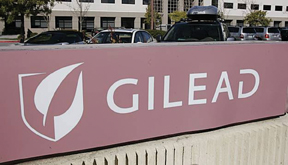The 20th International AIDS Conference in Melbourne, Australia, kicked off yesterday with hepatitis co-infection leading discussions. Findings from the conference highlight how the race to eradicate the hepatitis C virus is advancing through the lens of another infectious disease: HIV.
Approximately one-third of HIV patients have also contracted HCV, and the group has low tolerability for symptomatic drugs, which makes this difficult-to-treat group a major unmet need for antiviral drugmakers like Gilead and AbbVie. As many as 7 million people are estimated to have both viruses.
Among research discussed at the conference, AbbVie’s 3D regimen paired with ribavirin demonstrated a sustained virologic response rate (i.e. cure) of 94% for patients with HCV genotype 1 (the most common genotype) and HIV, attendees were told earlier today. The trial—known as TURQUOISE-1—is expected to hit its primary completion date in September 2015, according to clinicaltrials.gov.
In GT1 co-infected patients, Gilead’s Sovaldi paired with ribavirin saw much lower cure rates of 74%, according to a recently released study published in JAMA. Gilead’s trial also included less-common genotypes 2 and 3. Patients in these subgroups saw SVR12 rates of 88% and 67%, respectively.
Researchers noted in the JAMA study’s conclusion that the research was not without its limitations, writing, “Patients with cirrhosis (10%) and women (17%) were underrepresented. In addition, relatively few patients with advanced HIV disease were enrolled; as such the safety, tolerability, and efficacy of sofosbuvir and ribavirin among such patients is not known and additional studies are warranted.”
AbbVie’s trial, too, seemed to lack diversity. The first part of the trial, in which patients on the three-drug regimen saw 94% SVR12, was comprised of more than 90% men—the majority of whom were white with a median age of 51 years old. However, 90% of those sufferers had subtype 1a, which is known to be harder-to-treat than 1b, and 19% also suffered from liver damage—or cirrhosis. The second part of the trial is expected to start later this year.








